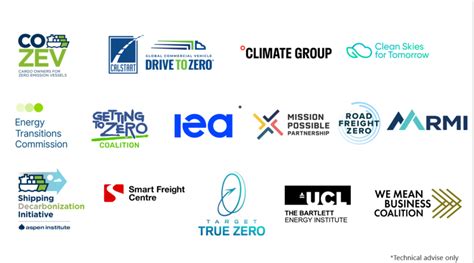ISO 14044 is a critical standard in environmental management, providing guidelines for life cycle assessment (LCA) to evaluate the environmental impacts of products and processes. In the context of education, understanding and applying ISO 14044 can greatly enhance course evaluation and curriculum development, particularly in sustainability-focused programs. This article delves into the key components and requirements of ISO 14044, offering expert insights into the challenges and best practices for its implementation. Through real-world case studies, we explore how educational programs successfully integrate ISO 14044, and consider its future impact on sustainability education and industry practices. Understanding this standard is essential for fostering environmentally responsible educational initiatives.
electrapk.com will lead an exploration of this topic in detail.
1. Overview of ISO 14044 and its Importance in Environmental Management
ISO 14044 is a globally recognized standard that plays a vital role in environmental management by providing a framework for conducting Life Cycle Assessments (LCA). LCA is a systematic method used to evaluate the environmental impacts associated with all stages of a product’s life, from raw material extraction to disposal. ISO 14044 outlines the requirements and guidelines for assessing these impacts, ensuring that evaluations are consistent, transparent, and scientifically based.
The importance of ISO 14044 lies in its ability to help organizations and industries minimize their environmental footprint. By adhering to this standard, companies can identify areas for improvement in their production processes, reduce resource consumption, and minimize waste. In the educational context, ISO 14044 provides a valuable tool for integrating sustainability principles into course content, allowing students to engage with real-world environmental challenges. As the demand for environmentally responsible practices grows, ISO 14044 serves as a cornerstone for promoting sustainable development across various sectors.

2. Key Components and Requirements of ISO 14044
ISO 14044 establishes a comprehensive framework for conducting Life Cycle Assessments (LCA) by defining key components and requirements essential for a thorough environmental impact evaluation. The standard is structured around four main phases: goal and scope definition, inventory analysis, impact assessment, and interpretation.
The goal and scope definition phase involves clearly stating the purpose of the LCA and establishing the boundaries of the study. This phase is crucial for ensuring that the assessment is aligned with the intended objectives and that the scope is well-defined.
The inventory analysis phase involves collecting and analyzing data on the inputs and outputs associated with the product or process under study. This includes gathering information on energy use, raw material consumption, emissions, and waste generation.
The impact assessment phase evaluates the potential environmental impacts based on the inventory data. This phase involves categorizing and quantifying the impacts, such as global warming potential, resource depletion, and pollution levels.
Finally, the interpretation phase is where the results are analyzed and conclusions are drawn. This phase ensures that the findings are consistent with the defined goals and that any uncertainties or limitations are addressed.
By adhering to these components and requirements, ISO 14044 provides a robust and systematic approach to assessing and managing environmental impacts, promoting sustainable practices across various industries.

3. The Role of ISO 14044 in Course Evaluation and Curriculum Development
ISO 14044 plays a significant role in course evaluation and curriculum development, particularly in programs focused on sustainability, environmental management, and related fields. Integrating ISO 14044 into educational curricula provides students with a deep understanding of life cycle assessment (LCA) methodologies, equipping them with practical skills to assess and manage environmental impacts.
In course evaluation, ISO 14044 offers a framework for assessing the environmental content and sustainability outcomes of various educational programs. By incorporating this standard, educators can ensure that their courses address relevant environmental challenges and promote critical thinking about resource use, waste management, and pollution prevention. It allows for the alignment of course objectives with real-world environmental goals, ensuring that students are prepared to tackle pressing sustainability issues.
Curriculum development benefits from ISO 14044 by enabling the creation of courses that are scientifically rigorous and industry-relevant. The standard provides a structured approach to teaching LCA, ensuring that students gain hands-on experience with the tools and techniques used in professional environmental assessments. This integration also fosters interdisciplinary learning, as students can apply ISO 14044 principles across various subjects, from engineering to business.
Overall, ISO 14044 enhances the educational experience by embedding sustainability into the core of academic programs, preparing the next generation of professionals to lead in environmentally responsible practices.

4. Expert Insights: Challenges and Best Practices in Implementing ISO 14044
Implementing ISO 14044 in educational programs and professional practices presents several challenges, but expert insights reveal effective strategies for overcoming them. One significant challenge is the complexity of Life Cycle Assessment (LCA) itself. Conducting a comprehensive LCA requires a deep understanding of various environmental factors, extensive data collection, and precise analysis, which can be resource-intensive and time-consuming.
Experts recommend starting with clearly defined goals and boundaries to manage the scope of the LCA effectively. This ensures that the assessment remains focused and manageable, especially for educational purposes. Another challenge is the interpretation of results, where inconsistencies or uncertainties can arise. Best practices suggest involving multidisciplinary teams to bring diverse perspectives and expertise to the interpretation phase, enhancing the robustness of conclusions.
Moreover, integrating ISO 14044 into curricula requires continuous updates to reflect evolving environmental standards and practices. Collaboration with industry partners can provide students with real-world case studies and hands-on experience, bridging the gap between theory and practice.
Ultimately, the key to successful implementation lies in adopting a systematic approach, maintaining flexibility to adapt to specific educational contexts, and fostering a culture of sustainability that extends beyond the classroom.
electrapk.com
